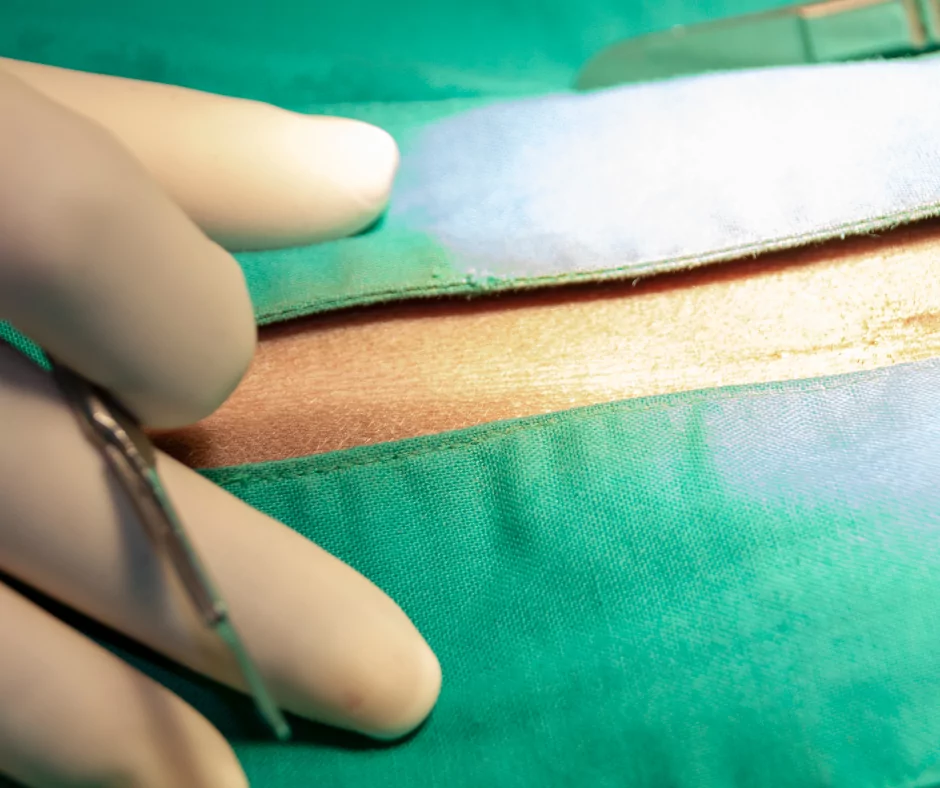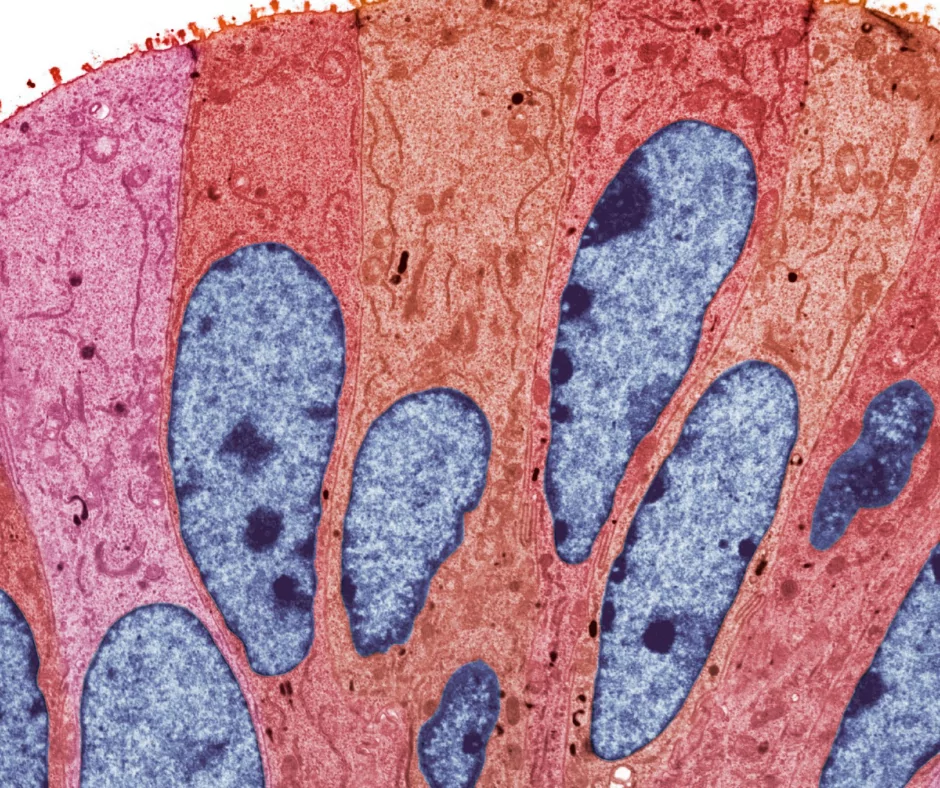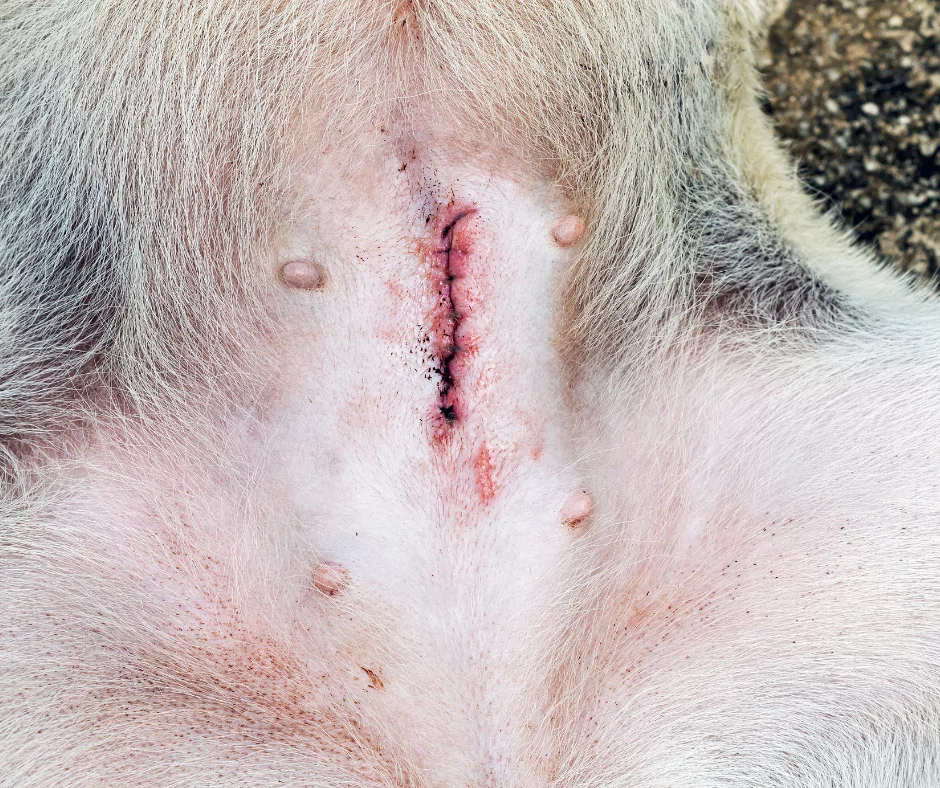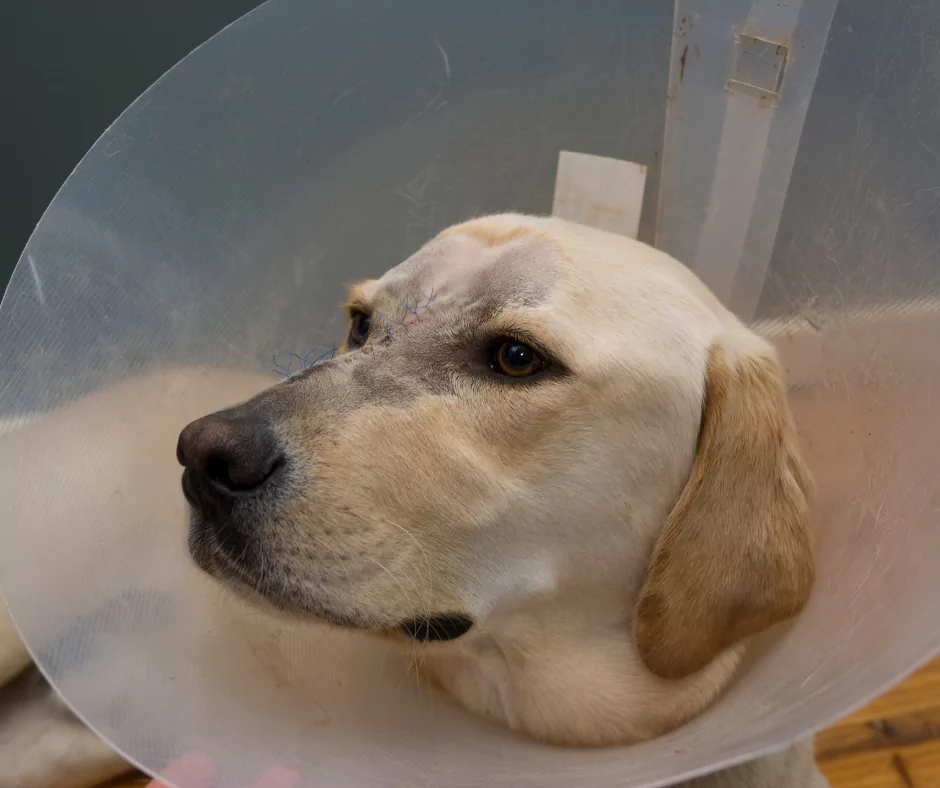Today, we will be discussing Spaying: Ovariohysterectomy in large dogs, (a procedure where the ovaries and uterus are removed entirely in order to sterilize a female dog.) But, what exactly is this procedure, and what does it entail? Does the size of my dog make it more difficult?
We are here to help you navigate! Read below!

The Definition of an Ovariohysterectomy in Dogs
To start, let’s define what an ovariohysterectomy actually is. You can begin by dividing up the word and defining its parts. Ovario pertains to the ovaries, hyster relates to the uterus, and ectomy pertains to the surgical removal of a certain part of the body.
With that in mind, the word literally means surgical removal of the ovaries and uterus. The male version of this procedure is called a neuter. This procedure is done to remove the dog’s testicles, to limit unwanted behavior, potential disease, and unwanted pregnancies.
The Purpose of This Procedure
So now that we know what the word means, we ask ourselves, why is this medically necessary? What we know of this procedure (as far as human medicine goes) is that you have it performed if there is a disease or prophylactically trying to prevent the illness from happening. Veterinary medicine is no different.
By removing the uterus and ovaries, we ensure that the female dog avoids future heat cycles. This can help significantly to prevent unwanted behavior that is associated with heat cycles. It also greatly decreases the chance of mammary cancer.
It will also eliminate a pyometra infection (pus-filled uterus) from happening in the future. It obviously takes away any chance of unwanted pregnancies happening, as well as any problems that are associated with dystocia (difficulty giving birth.)
For some female dogs, the reason it is performed is that there is disease present, or like stated above, a pyometra taking place.

Tests and Diagnosis to be Done Before a Canine Ovariohysterectomy
Before doing any surgery, your veterinarian will perform a series of tests at the veterinary hospital to ensure their metabolic function is in tip-top shape. Depending on your veterinarian’s protocols and your dog’s health status tests and diagnostics that can be performed are listed below:
- Complete blood cell count
- Chemistry profile
- Radiograph of the chest
- Urinalysis
- PCV and TP
Based on the individual health of the patient will determine what is performed. These tests range from checking your dog’s blood cells for any infection present, any issues with the liver, kidneys, and other organs, your dog’s clotting factors, and if there are any tumors or abnormalities present within the body.
On the subject of when to spay your dog, there are some things to note. For one, age is not always a factor unless your veterinarian wants to avoid the first estrus (heat) cycle. Another is the size of your dog. The bigger the dog, the stronger the veterinarian needs to be to navigate and manipulate your dog’s reproductive tract.

How the Procedure is Performed
After your dog enters the veterinary hospital, a thorough physical examination is performed, ensuring your dog is not going through a heat cycle. Your dog will then be premedicated for surgery.
It is important to note that your dog can be spayed while in heat but, it is often undesirable because it makes the procedure more challenging since there is an increased amount of blood flow to the area, obscuring the veterinarian’s view.
After your dog is premedicated and relaxed, she will be taken to the surgical prep area. Here she may have an intravenous catheter placed to be used as a drug port and/or fluid administration.
Fluid administration ensures that the dog stays hydrated during the procedure and gives the licensed veterinary technician a way to correct hypotension (low blood pressure.)
Your dog is then placed on her back on a downward tilt to have her hair clipped. Clipping the hair is imperative and directly related to creating a sterile (without contamination) field. The clipped abdomen is then scrubbed with a surgical scrub (usually iodine scrub/chlorhexidine scrub followed by alcohol and sprayed with iodine/chlorhexidine solution) to disinfect the area and then covered with a sterile surgical drape.
The licensed veterinary technician will open the top part of the surgical pack for the veterinarian so that they can begin the procedure. A scalpel blade is then used to incise the skin in the middle of the abdominal cavity.
The veterinarian will now view the abdominal cavity to identify the reproductive tract. The major blood vessels are tied off or ligated with a surgical suture that will dissolve over time. This has to be done in order for the organ(s) to be removed.
When the veterinarian is confident all blood vessels are tied off and they have no bleeding, they will begin to close the abdominal cavity. They do this in two to three layers using a suture technique again. The outer layer can be closed with a dissolvable suture, the suture that needs to be removed, surgical glue, or even surgical staples.
Surgical staples and non-dissolvable sutures must be removed between 10-14 days after surgery.
Traditional vs. Modern OVH Techniques
There are two ways in which a spay is usually performed. Traditionally it has been done incisional and still remains very popular, but it is also performed laparoscopically.
Incisional spay surgeries consist of using a scalpel blade to make an incision, as explained above. Laparoscopic surgery consists of the veterinarian making two to three small incision sites on the abdomen followed by using carbon dioxide gas to inflate and extend the abdominal area. Then using laparoscopes, the veterinarian can visualize the reproductive tract.
The blood vessels are ligated using clips, suture, or vessel-sealing devices, and the tools are used to grasp and manipulate the reproductive organs. This approach is popular because it’s less traumatic than a traditional spay, however, it is much more expensive and takes a longer time to perform.
The Different Canine Ovariohysterectomy Techniques
Besides the midline (towards the middle) approach stated above, there is also a lateral (side of the body) flank (side between ribs and hips) approach that can be performed. This approach requires the veterinarian to make their incision laterally.
The lateral flank approach is often used to avoid further trauma to the abdominal area and in cases where the abdomen is compromised (from infection, trauma, or mammary gland tumors). It is not recommended if the pet is suffering from a pyometra.
Another procedure used is the ovariectomy (removal of the ovaries) instead of removing both ovaries and uterus. Recent literature has been stating that there is no long-term difference between the two.
However, in America, the traditional ovariohysterectomy seems to be the most popular.

How Long Does an Ovariohysterectomy Take in a dog?
Of course, depending on the size of your dog and the skill of the veterinarian will determine the time spent on the ovariohysterectomy surgery. However, it usually takes around 45 minutes or so.
This includes the surgical preparation of your dog, which often doesn’t include the veterinarian.
If your dog is in heat, the surgery will take longer because there tends to be more bleeding. The bleeding obstructs the view of the veterinarian, and sometimes they need an extra set of hands.
Spay surgeries that are taking place due to cancer or a pyometra may further complicate the surgery resulting in a longer operating time.
Postoperative Care
Postoperative care is relatively simple. If necessary, your veterinarian will prescribe pain medication and a nonsteroidal anti-inflammatory. Sometimes veterinarians will also prescribe a prophylactic antibiotic.
It’s also imperative that you make sure your dog does not chew, bite, or lick at the incision site. Dogs use this technique to soothe and help themselves heal, but it can lead to the opening of the surgical site or infection taking place.
Usually, an Elizabethan collar is sent home with your dog to avoid this.
Dogs should not be active during their healing time. This means no running, jumping, playing, or roughhousing with other family members or pets. It also means short leash walks only.
Some veterinarians require a recheck after an ovariohysterectomy, and some do not. It is a personal preference. Of course, if your dog has sutures that need to be removed, they will have to have a surgical recheck.

Summary
All and all, spaying your dog is relatively safe but not without risks. Undergoing any anesthetic procedure has its dangers.
The veterinarian and the licensed technician must pay close attention to your dog’s vital signs in order to provide the care they need.
Also, it is wise to make sure you do your research and go to an accredited hospital that takes the proper care. Weighing your cost risk analysis is an integral part of being a pet owner.
Many owners worry about the price and what it costs, but avoiding fixing your dog can cost a whole lot more down the line.
Check out this video of an ovariohysterectomy procedure done by DVM Greg Martinez.
